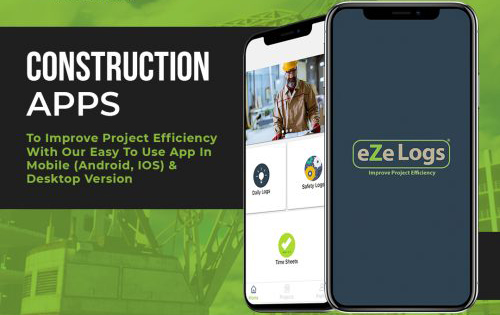In the construction industry, ensuring the safety and security of a site is a top priority. As projects grow more complex and sites become larger, the need for advanced security measures increases. One emerging trend in construction site safety is the integration of security data supply. This approach leverages real-time data to enhance site safety, streamline operations, and protect valuable assets.

Here’s how security data supply is transforming the landscape of construction site safety and security.
The Role of Security Data in Construction
Security data supply involves the collection, analysis, and utilization of data from various security systems to improve site management and safety protocols. In a construction context, this data can come from a variety of sources, including surveillance cameras, access control systems, and environmental sensors.
- Surveillance and Monitoring: Modern construction sites are equipped with advanced surveillance systems that provide continuous monitoring of the site. These systems generate vast amounts of data that can be analyzed to identify security threats, monitor worker behavior, and ensure compliance with safety protocols.
- Access Control Systems: Data from access control systems is crucial for managing who enters and exits the construction site. By analyzing this data, site managers can track the movement of personnel and materials, ensuring that only authorized individuals have access to critical areas.
- Environmental Sensors: Sensors that monitor environmental conditions, such as temperature, humidity, and air quality, provide valuable data for maintaining a safe working environment. This data can be used to prevent hazardous conditions that could lead to accidents or health issues.
Enhancing Site Security with Data-Driven Insights
The integration of security data supply allows construction managers to make informed decisions that enhance site security. By leveraging data, potential threats can be identified and mitigated before they escalate.
- Proactive Threat Detection: Security data supply enables proactive threat detection by analyzing patterns and identifying anomalies. For example, if unusual movement is detected in a restricted area, the system can trigger an alert, allowing site managers to respond quickly and prevent potential security breaches.
- Real-Time Response: One of the key advantages of using security data is the ability to respond in real-time. Whether it’s a security breach, a safety incident, or an environmental hazard, real-time data allows for immediate action, minimizing the impact on the site.
- Integrated Security Solutions: Security data supply facilitates the integration of various security systems, creating a comprehensive security network. By combining data from surveillance cameras, access control, and environmental sensors, site managers gain a holistic view of the site’s security status, enabling more effective decision-making.
Improving Worker Safety Through Data Analytics
Worker safety is a critical concern on any construction site. Security data supply plays a significant role in enhancing safety by providing valuable insights into on-site activities and potential hazards.
- Monitoring Worker Behavior: Data from surveillance systems can be analyzed to monitor worker behavior and ensure compliance with safety protocols. For instance, the system can detect if workers are not wearing the required personal protective equipment (PPE) or if they are engaging in unsafe practices.
- Accident Prevention: By analyzing data from past incidents, site managers can identify trends and potential risk factors. This information can be used to implement preventive measures, such as additional training or changes in site layout, to reduce the likelihood of accidents.
- Emergency Response Coordination: In the event of an emergency, security data supply can facilitate a coordinated response. Real-time data allows site managers to quickly assess the situation, direct emergency personnel to the exact location, and ensure that workers are evacuated safely.
Leveraging Security Data Supply for Asset Protection
Construction sites often house valuable equipment, materials, and tools, making them a target for theft and vandalism. Security data supply enhances asset protection by providing continuous monitoring and tracking.
- Tracking Equipment and Materials: By integrating data from GPS trackers and RFID tags, site managers can monitor the location of equipment and materials in real-time. This reduces the risk of theft and ensures that resources are available when needed.
- Preventing Unauthorized Access: Access control data helps in preventing unauthorized access to sensitive areas where high-value assets are stored. By analyzing entry and exit data, site managers can detect any irregularities and take immediate action to secure the site.
- Deterrence and Documentation: The presence of advanced security systems and the knowledge that these systems are collecting data act as a deterrent to potential thieves and vandals. Additionally, in the event of an incident, the recorded data provides crucial evidence for investigations and insurance claims.
The Future of Security Data Supply in Construction
As technology continues to advance, the role of security data supply in construction is set to expand. Future developments will likely focus on increasing the integration of data sources and enhancing the analytical capabilities of security systems.
- Artificial Intelligence and Machine Learning: The integration of AI and machine learning with security data supply will enable even more sophisticated analysis. These technologies can predict potential threats, optimize security protocols, and continuously improve safety measures based on data patterns.
- Mobile and Remote Monitoring: With the rise of mobile technology, site managers can access security data from anywhere, at any time. This flexibility allows for more agile site management and ensures that security is maintained even when managers are off-site.
- Sustainability and Security: As sustainability becomes a priority in construction, the role of security data supply will evolve to include environmental monitoring and management. Data from environmental sensors will help ensure that sites not only adhere to safety standards but also minimize their environmental impact.
Integration of Security Data Supply with Site Management
The integration of security data supply with overall site management practices is crucial for maximizing its benefits. By aligning security data with project management tools and processes, site managers can create a safer and more efficient working environment.
- Centralized Data Platforms: A centralized platform that aggregates data from all security systems allows for more efficient management. Site managers can access all necessary information from a single interface, streamlining decision-making and improving response times.
- Collaboration Across Teams: Security data should be shared across all teams involved in the construction project, including site managers, safety officers, and subcontractors. This collaborative approach ensures that everyone is informed and can contribute to maintaining site safety and security.
- Continuous Improvement Through Data Analysis: Regular analysis of security data provides insights that can be used to improve site management practices. By identifying recurring issues or inefficiencies, site managers can implement changes that enhance overall site safety and security.
By incorporating security data supply into site safety and security practices, construction managers can not only protect their assets but also create a safer working environment for all personnel. This data-driven approach represents the future of construction site management, where technology and safety go hand in hand.


